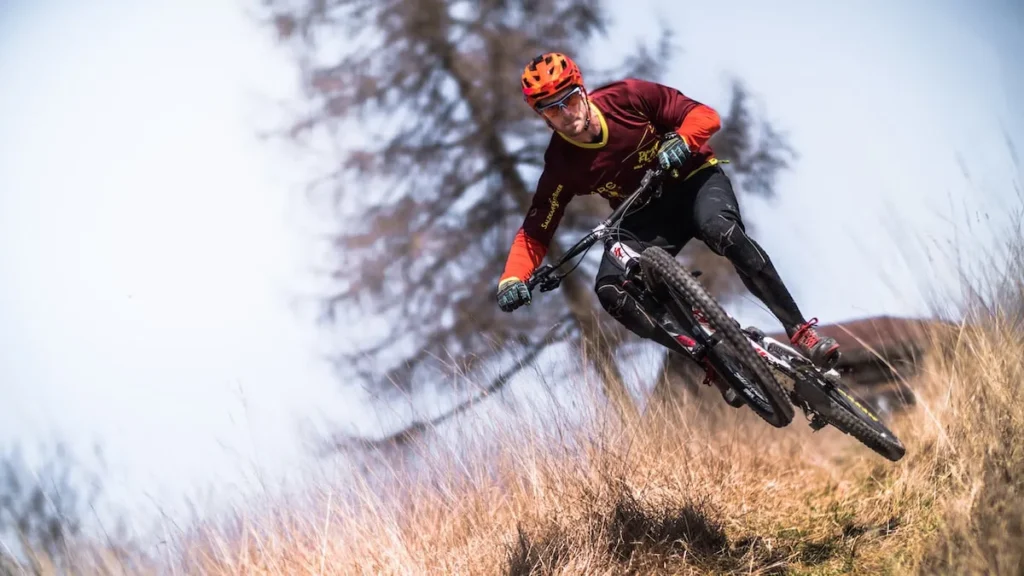When it comes to mountain biking, one of the most important pieces of safety equipment is a bicycle helmet. Helmets can prevent serious head injuries in the event of a crash or fall. But with helmets ranging in price from $20 to $200 or more, how do you know if a cheaper helmet will provide adequate protection? There are a few key factors to consider when choosing a mountain bike helmet.
Helmet Construction and Materials
One of the biggest differences between cheap and expensive helmets is the materials used. More expensive helmets typically use higher quality materials that are lighter weight and more durable.
The outer shell of a helmet is usually made from plastic, such as polycarbonate or ABS. More expensive helmets may use composite materials like carbon fiber which are extremely strong and lightweight. The inner liner is usually expanded polystyrene (EPS) foam. More costly helmets often use multiple densities of EPS foam to fine tune the impact absorption.
High end helmets may also utilize advanced features like MIPS (Multi-Directional Impact Protection System). This adds a slick liner inside the helmet allowing it to rotate slightly during impact to reduce rotational forces on the brain.
While these high-tech materials provide enhanced protection, a cheaper helmet made with standard EPS foam and a plastic shell can still offer good protection if properly constructed. The key is ensuring the helmet meets safety standards.
Safety Standards
All bicycle helmets sold in the United States must meet minimum safety standards set by the Consumer Product Safety Commission (CPSC). Adhering to these standards ensures a helmet will protect your head in a fall or crash.
The CPSC standards test the shock absorption of helmets when dropped on various parts of the helmet from a specified height. Helmets must keep the impact below a maximum g-force threshold to be certified.
Many mountain biking helmets also meet more stringent standards set by ASTM International (ASTM F1952) and the International Safety Equipment Association (ISEA/SNELL B-95). These standards include additional tests for positional stability and peripheral vision.
As long as a helmet meets CPSC, ASTM or SNELL standards, it should provide adequate protection for most mountain biking. You’ll find cheap helmets ranging from $20-$50 that meet at least the minimum CPSC standard. These affordable options allow you to get the necessary safety gear without breaking the bank.

Helmet Fit and Comfort
Beyond materials and standards, it’s crucial to find a helmet that fits your head properly. An ill-fitting helmet can be uncomfortable and may not protect you in a crash.
Helmet sizes are based on the circumference of your head. Most adult sizes range from 20 inches to 24+ inches. Measure around your head about 1 inch above your eyebrows for an accurate size.
Helmets are available in different shapes to fit varying head widths. Common shapes include oval, intermediate oval and round. Oval helmets fit narrower heads, while round fits broader heads. Intermediate oval is in between the two.
Once you find the right size and shape, adjustments can dial in the fit. Helmets have adjustable retention systems with a dial or sliders to tighten or loosen the fit. Adjustable straps allow you to customize the angle and how the helmet sits on your head.
Pads inside the helmet should touch all around your head when properly fitted. A snug fit is crucial for safety but not so tight as to be uncomfortable. The helmet should not rock side-to-side or front-to-back easily. You’ll want to test the fit and adjustments wearing the same headgear you use when mountain biking.
While more expensive helmets offer premium fit systems and pads, you can still get a comfortable safe fit even with a budget model if you take the time to adjust it properly for your head.
Ventilation
Proper ventilation is another key factor for mountain biking helmets. Ventilation ports and channels allow air to flow through the helmet keeping your head cool when riding hard.
Inexpensive helmets designed for recreational road cycling often have minimal vents to reduce cost. But a typical mountain biking helmet will have 15 or more vents to handle the higher exertion and allow some airflow. Higher-end helmets will add even more vents and deeper channels for optimal cooling.
The downside of more vents is a reduction in overall durability and impact protection. More exposure through vents means less total surface area for the EPS foam liner. So you have to balance cooling needs with safety precautions.
For vigorous mountain biking, look for a helmet with at least 10-15 vents as a minimum for decent airflow. This allows some cooling while still maintaining good foam coverage. The best option is trying on helmets to test ventilation and if they keep you cool enough when riding hard.

Other Features
Some other features to consider when choosing a mountain bike helmet include:
- Visor – A visor can help shield your eyes from sun glare or rain when riding. Short visors are common on trail helmets. Go visor-less for more downhill coverage.
- Camera Mounts – Integrated camera mounts allow you to easily attach action cameras to record your rides. Some cheaper helmets include basic top mounts.
- Full Face Coverage – Full face helmets provide extra protection for downhill riding and bike parks. But they reduce ventilation and add weight.
- Removable Chin Bars – Enduro helmets have removable chin bars to convert from full-face to half-shell. This gives downhill protection plus ventilation for climbing.
While high-end helmets include more features, don’t overlook basic budget models. They offer good safety at affordable prices. Prioritize fit, comfort and ventilation first when choosing a mountain bike helmet rather than extra bells and whistles.
The Bottom Line
When shopping for a mountain bike helmet, there are some clear differences between cheap and premium models. More expensive helmets utilize advanced materials and construction for reduced weight and enhanced protection. They also offer premium fit and adjustment systems for maximum comfort. And they provide better ventilation for cooler riding in warm weather.
However, an inexpensive helmet can still provide good safety if it meets key criteria. As long as it adheres to basic CPSC impact standards, has a snug comfortable fit, and decent ventilation with at least 10-15 vents, a budget mountain bike helmet can be a good choice.
Prioritizing fit and proper adjustment is critical no matter what you spend. Take the time to test sizes and make adjustments for your specific head shape and dimensions. This helps ensure the helmet will protect you when you need it.
While there is no doubt high-end mountain biking helmets provide premium function, inexpensive models can still offer good safety. For the budget-conscious rider, a cheaper helmet allows you to get out on the trails while protecting both your head and wallet.






